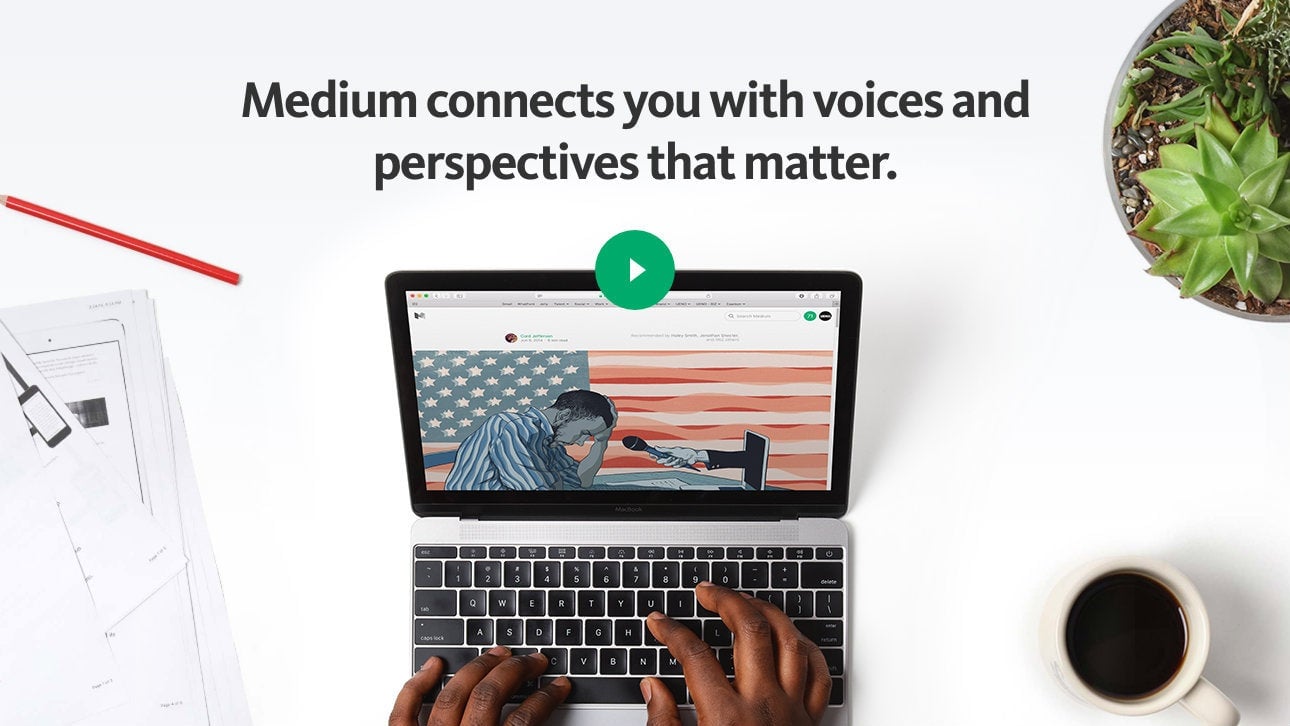How will Medium make (more) money?
To grow and justify its lofty valuation, five-year-old Medium now needs to morph into a full-featured platform. (This is part two of a series—part one is here.)


To grow and justify its lofty valuation, five-year-old Medium now needs to morph into a full-featured platform. (This is part two of a series—part one is here.)
Pitching Medium’s doesn’t require a thick deck of slides. Today, the platform is essentially an elegant, minimalist publishing and social system. It hosts a million plus casual contributors, and only a small number of quality writers producing on a regular basis.
Its feed is both abundant and chaotic, often submerged by navel-gazing pieces that exhaust every flavor of life-hacking and personal improvement. In this hodgepodge, compelling content can be difficult to find, but is usually worth the effort.
This stream of new writing flows to the platform at a rate of 50,000 to 100,000 pieces a week. (Complete this survey for readers of Medium, proposed by Elizabeth Tobey, Medium’s head of community). Medium’s traffic is huge for a hardcore publishing platform. The traffic analytics firm SimilarWeb credited Medium 72 million visits in March. To put things in perspective, Business Insider is said to get almost twice that, and The New York Times five times more (about 361 million visits).
A large part (38%) of Medium’s traffic comes from social (vs. 16% for The New York Times); it also sees a significant amount of direct access (30% vs. 43% for The NYT), and it is said to get 12% of its audience from search. These comparisons are simply meant to give an idea of Medium’s digital footprint. Their meaning is limited because Medium is a contributive platform that intends to build its own social environment. Thanks to a remarkably efficient set of tools, people “like,” respond (which is slightly different from commenting), highlight, bookmark, share pieces, and sometimes opt to follow the author. As everything else on the platform, it is neatly implemented.
This unique social layer is Medium’s most significant achievement. Within its boundaries, the conversation is most often quiet and measured. Writers get fewer recommendations than from a fully open blog for instance, but appreciate the higher quality of responses to their work.
About a year ago, I felt a great deal of skepticism towards Medium, from both tech and media worlds. People were questioning its quality-centered concept that, they said, could prevent Medium from reaching a monetizable audience. As a result, it would fail to attract the funding needed by the size of its operation, now estimated to exceed one hundred staffers. Investors have since voted with their wallet: Medium has raised a total of $132 million, including a $50 million Series C that values the company at $600 million.
Its $600 million valuation now puts pressure on Medium to come up with a sustainable business model. Unlike many other publishing outlets, Medium narrowed its field of opportunity.
For example, given its type of editorial, going for distributed content doesn’t make any sense. There’s also the fact that distributed content doesn’t work as expected: see a previous Monday Note on the subject. The Guardian also suggests that Facebook makes much more money with ads in its newsfeed filled with third party editorial, as opposed to the money drawn by publishers from traffic sent by Facebook—How surprising…
Medium’s model also means it can’t make money using banners that would besmirch Medium’s sleek design. Similarly, we shouldn’t see careless dumps from ad networks (Taboola, Outbrain, and others) like these two gems drawn from my personal collection of “great” ads:

Medium is therefore left with two options to make money: going for branded advertising, and combining it with a cut on paid-for content.
For Medium, going after native advertising is a natural move. But injecting sponsored articles into such an immensely diversified set of contents will require a new approach. Native ads are usually associated with the notion of made-to-order, carefully crafted packages that are iteratively designed to precisely fit the brand’s wishes.
Such an approach goes against any idea of “industrializing” the production of native ads (I wrote a piece titled “Industrial Scale Branded Content“ pointing to the New York Times’ staff of 70 to manage its Branded Content operations…) For Medium, deploying a large sales force might not be enough. In order to address client specs and volume, Medium would have to rely on sophisticated (and automated) analysis of contributors’ contents.
The most innovative approach will most likely involve a paid-content system to be adopted by thousands of contributors and publishers. Like an advertising scheme, Medium could take a cut in subscriptions thus generated. But building a scalable, easy-to-use, paid-for system will require features that will take Medium closer to a full-blown Wordpress-powered website. Medium engineering and design teams would need to find a delicate balance between preserving the simplicity that lies at the core of the concept while offering publishers the minimum set of functions required to develop a fully-functional paid-for system.
What are these features? Like many, I have some ideas about what Medium should do, and what it should avoid at all cost. But at this time, it first ought to probe its contributors. Hence the link here: fill out our survey for contributors now!
This post originally appeared at Monday Note.